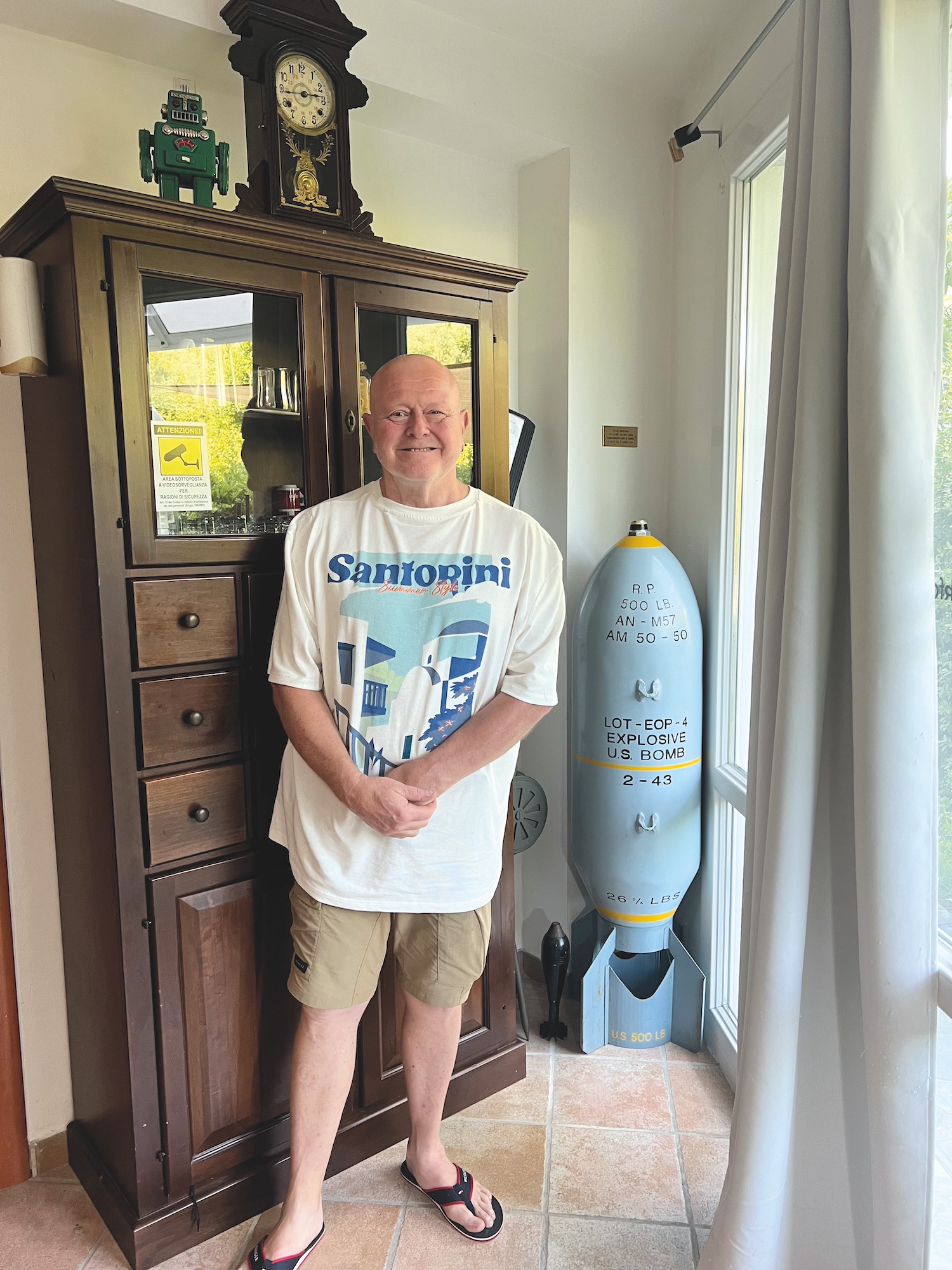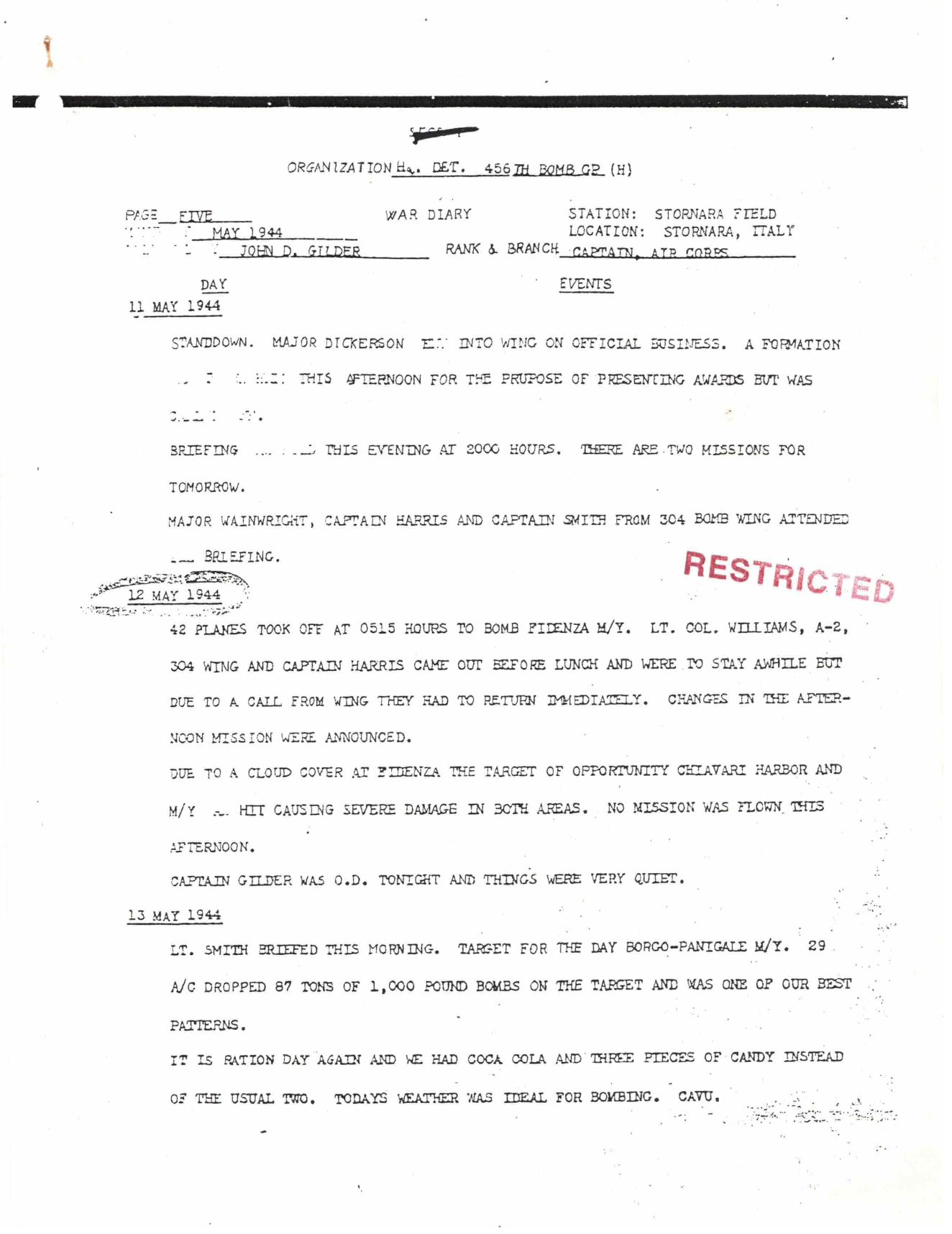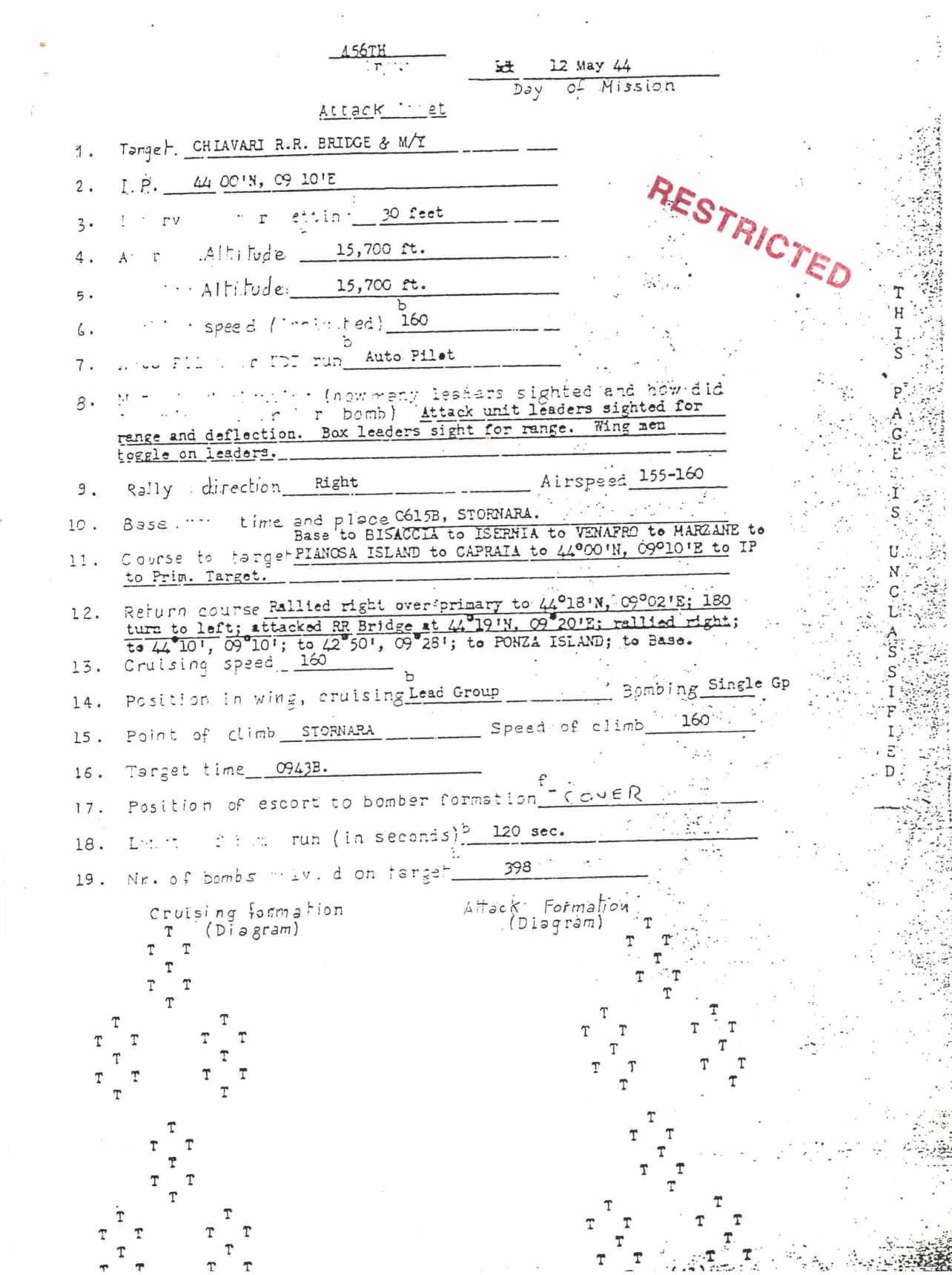
Ruggero Ferri
Text: M.Zisso; Photo: Archive
We are not a history magazine, but sometimes the story we come across is so interesting that we want to share it with you. Have you ever stayed in a hotel where you ate breakfast in the company of a bomb, used as decoration? That’s exactly what happened to us in Northwest Italy, a few kilometres from the beautiful seaside commune of Chiavari. Why have a bomb in a house? Where did it come from? And how old is it?
Summer is a holiday time for many, and we are no exception to the tradition. This year, we decided to enjoy the beautiful sights of Italy, booking a very nice apartment outside of Genova with the plans of visiting a dog beach. You can read more about our trip at the end of this magazine.
Leivi is a town and commune in the Metropolitan City of Genova, in the Liguria Region of Northwest Italy. A few kilometres from Chiavari, it is a centre for the production of olive oil.
We met our host, Ruggero Ferri, in the breakfast room, which was decorated with a collection of unique vintage items. Among those items was a big bomb. This made me very curious – why is there a bomb in this house? Where did he get it from? And how old is it?
As we spoke, Mr. Ferri explained its origins and history – it is an original bomb from the American bombing of Genova at the night of 11th May, 1944.
Genova was the largest and busiest port in Italy. During WWII, it was heavily bombarded by air and naval forces, suffering heavy damage.
According to Wikipedia, there were several major raids on the harbour in May 1944:
1st May, 1944
A raid on the harbour by six RAF bombers. Bombs also fell on the city, killing two civilians.
2nd May, 1944
A raid by twelve RAF bombers.
9th May, 1944
26 RAF bombers attacked the harbour. Bombs also fell on the city, killing four civilians.
19th May, 1944
A raid by the 15th Air Force, targeting the harbour and the marshalling yard. The objectives were hit, but many of the bombs fell on the city (especially the old city centre). Among the damaged buildings were the University, the Cathedral, and the San Martino hospital, causing 111 deaths among the population.
28th May, 1944
Another raid by the bombers of the 15th Air Force, targeting the harbour and the marshalling yard.
Mr. Ferri found a bomb, and since it was in good shape with a serial number, he asked the American Army for details about it. After some time, he received related documents from them.
The restricted war diary from May 1944 speaks clearly – on 12th May, 1944, the staggering 42 planes took off at 05:15.
The mission: Target of opportunity due to cloud cover, Chiavari Bridge. Assessment: Direct hit, causing severe damage.
The war diary provided by the US Army can give you more authentic details.



